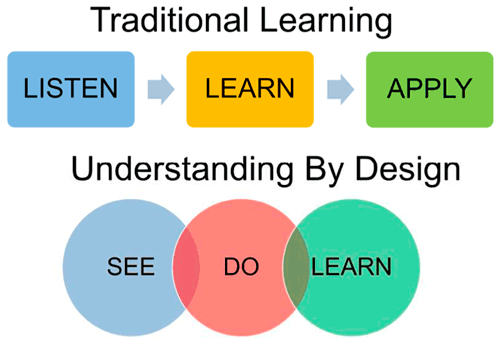Curriculum In A Box's purpose is to share results from our NSF Research Experiences for Teachers in Engineering Program. The program, RET Site in Engineering: Connecting with Community Colleges (NSF Grant 1009823), is the only NSF RET focused exclusively on community college faculty and their students. You are welcome to use these materials as long as you acknowledge the NSF Site RET in Engineering: Connecting with Community Colleges grant and the community college faculty member who developed the material.
The Principal Investigator for the RET is Dr. Isabel Lloyd, associate professor from the Department of Materials Science and Engineering in the A. James Clark School of Engineering at the University of Maryland. The three-year grant was awarded in 2011. The primary goals were to (1) integrate community college participants into engineering and engineering education research programs at UMD that they could use for professional development and (2) ‘translate’ into a curriculum element that increased the interest and/or level of understanding of their students in STEM subjects and (3) strengthen institutional relationships between community colleges and the University of Maryland. Three cohorts of community college faculty have participated in the program. This website shares curriculum elements that can be inserted into 100-200 level science, technology, engineering and mathematics courses. The common theme across all these curriculum elements is to use interdisciplinary approaches while explaining complex concepts that would promote critical thinking skills in students and help retain them in STEM disciplines. The common goal integrated into these curriculum elements is to enable students to visualize the “big idea” and to synthesize and apply the concepts to solve problems. All curriculum elements shared in this site have adopted the Understanding by Design (G. Wiggins and J. McTighe, 2nd Ed., Pearson Education, Inc. 2006) model, illustrated below, to build their curriculum element.

Goals for sharing the curriculum elements
- Support the faculty that are interested in exploring opportunities to integrate interdisciplinary approaches in their classroom instructions.
- Facilitate accessibility to instructional tools and other resources that may be adopted by faculty to engage students in conceptualizing “big ideas” in their disciplines.
- Promote student engagement through active learning, critical thinking and synthesis and application of concepts in problem-solving activities.
Characteristics of curriculum elements
- Diversity – the collection of curriculum elements shared here can be implemented either “as-is” or modified for user-needs addressing diverse courses, or even diverse STEM disciplines. This model, we hope, may appeal to students with diverse learning styles and strengths, and at the same time helping them to apply their quantitative skills to understand the “big picture” of concepts!
- Open-ended – albeit sounding prescriptive, components of all curriculum elements could be tailored to fit the users’ instructional goals and would promote the development of students’ critical thinking skills and synthesis of concepts to apply in case studies.
- Dynamic – our aim is to keep the curriculum elements open for changes, additions (and/or deletions) of components – all based on feedback from end users like faculty and students, including resources like student work, outcomes, or other similar documents.
Curriculum elements contain
- The subject area(s) where the curriculum element could be implemented.
- A brief description of the curriculum element.
- A brief description of the faculty developer’s goal(s) in developing the curriculum element using and Understanding by Design (UbD) approach.
- A short summary of the outcomes of the implementation of the curriculum element.
- Samples of handouts, assignments, reports, student feedback, pictures of the implementation and other curricular materials. Eventually, other resources added by users will also be part of the page.
Curriculum elements may also contain
- A description of the curriculum element using the Understanding by Design Template
- A short summary of the outcomes of the implementation of the curriculum element.
- Data and other resources.
- References and links to background materials.
Comments?
We hope that the resources and components of the shared curriculum elements will change with time and as we receive feedback and additional resources from users. We encourage all our users and visitors to send comments/ideas/suggestions to Associate Professor Isabel Lloyd.
Note: Research Experience for Teachers (RET) in Engineering and Computer Science is a program funded by the Directorate of Engineering of National Science Foundation. RET programs encourage K-12 teachers and community college faculty in Science, Technology, Engineering and Mathematics (STEM) disciplines to involve and collaborate with Engineering and Computer Science faculty in Universities. The educators are expected to translate their research experiences into classroom activities that will actively engage the students in the learning process and highlight the significance of interdisciplinary approaches to effective understanding of concepts.
Top